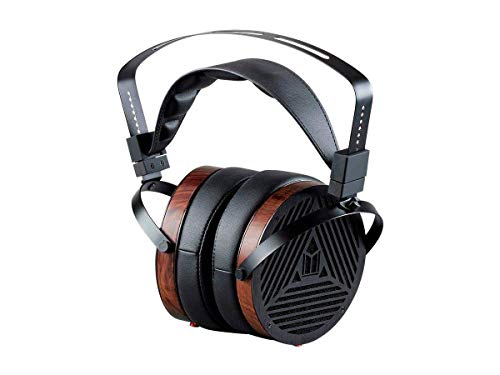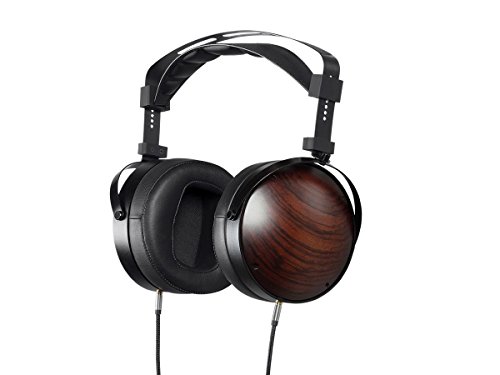In a world brimming with audio gear, Monolith headphones have carved out a niche for themselves as a go-to choice for audiophiles and casual listeners alike. With their promise of high-quality sound, comfort, and design, Monolith headphones have captured the attention of those seeking an elevated listening experience. This blog post delves into the intricate features, specifications, and performance of Monolith headphones, providing a detailed overview.
Table of Contents
- Introduction to Monolith Headphones
- Types of Monolith Headphones
- Key Features
- Performance Overview
- Comparative Analysis
- Pros and Cons
- FAQs
- Conclusion
1. Introduction to Monolith Headphones
Monolith headphones are designed by Monolith, a brand under the well-established producer of high-fidelity equipment, Monoprice. Known for leveraging cutting-edge technology in audio design, Monolith aims to deliver premium audio at an accessible price point. The line boasts a variety of models, including over-ear, on-ear, and in-ear headphones, catering to diverse preferences and price ranges.
2. Types of Monolith Headphones
Different models of Monolith headphones cater to varying user requirements. Below is a table showcasing some popular models:
| Model |
Type |
Connectivity |
Key Feature |
| Monolith M1060 |
Over-ear |
Wired |
Planar magnetic drivers |
| Monolith M570 |
Over-ear |
Wired |
Open-back design |
| Monolith M300 |
In-ear |
Wired |
Noise isolation |
| Monolith M300A |
In-ear |
Wireless |
Bluetooth 5.0 |
| Monolith M1570 |
Over-ear |
Wired |
Hybrid driver technology |
3. Key Features
Monolith headphones come packed with features that enhance their performance. Here are some notable aspects:
-
High-Quality Driver Technology: Many models feature planar magnetic drivers, which offer a more nuanced sound profile with little distortion.
-
Comfort and Design: With plush ear pads and ergonomic designs, Monolith headphones prioritize comfort for long listening sessions.
-
Frequency Response: The frequency response across their models is impressive, often exceeding the average human hearing range.
-
Durability: Built with premium materials, these headphones are designed to withstand daily use without compromising audio quality.
-
Versatile Connectivity: From wired connections with quality cables to wireless options for convenience, Monolith headphones accommodate a wide range of listening scenarios.
4. Performance Overview
The performance of Monolith headphones typically impresses. Their clarity, detail, and overall soundstage pave the way for an immersive listening experience.
Sound Quality
A key aspect of audio performance is how headphones reproduce different genres of music. Below is a list characterizing how the Monolith models handle various sound profiles:
- Bass: Full-bodied and deep, ideal for genres like hip-hop and EDM.
- Midrange: Balanced, making vocals and instruments sound natural.
- Treble: Clear and crisp, providing detail without being harsh.
5. Comparative Analysis
When comparing Monolith headphones to other brands, several factors come into play. The table below highlights how Monolith stacks up against two notable competitors: Sennheiser and Audio-Technica.
| Feature |
Monolith |
Sennheiser |
Audio-Technica |
| Driver Type |
Planar Magnetic |
Dynamic |
Hybrid |
| Price Range |
€99 - €499 |
€100 - €700 |
€80 - €400 |
| Sound Isolation |
Moderate |
Excellent |
Good |
| Comfort |
Very Good |
Excellent |
Good |
| Portability |
Moderate |
High |
High |
6. Pros and Cons
Like any product, Monolith headphones come with their own set of advantages and disadvantages.
Pros
- Exceptional Sound Quality: Rich audio with minimal distortion.
- Comfortable Design: Good for long listening sessions.
- Affordability: Competitive pricing for high-quality headphones.
- Versatility: Suitable for various music genres and audio content.
Cons
- Weight: Some models may be heavier than competitors.
- Brand Recognition: Less known compared to industry giants, which may deter some buyers.
- Limited Wireless Options: Fewer models available when it comes to Bluetooth connections.
7. FAQs
Q1: Are Monolith headphones suitable for studio monitoring?
A1: Yes, many models are excellent for studio monitoring due to their accurate sound reproduction.
Q2: What types of music are best suited for Monolith headphones?
A2: Monolith headphones perform well across genres, but they particularly shine in bass-heavy music and acoustic performances.
Q3: Can I use Monolith headphones for gaming?
A3: Absolutely! The immersive sound quality adds depth and realism, making them suitable for gaming.
Q4: How do I take care of my Monolith headphones?
A4: Regularly clean the ear pads and maintain the headband area. Avoid exposing them to extreme temperatures, and store them in a protective case when not in use.
Q5: Do Monolith headphones support noise cancellation?
A5: Some models provide passive noise isolation, but for active noise cancellation, it’s best to explore specific models that feature this technology.
Monolith headphones offer an excellent combination of high-quality sound, comfort, and competitive pricing, making them a formidable choice in the crowded audio market. With their variety of models that cater to diverse preferences and needs, Monolith stands out as a brand committed to delivering excellent audio experiences. Whether you’re looking for over-ear comfort, in-ear convenience, or a specialized model for studio monitoring, Monolith headphones provide options that are sure to satisfy any audiophile's cravings. In today’s world of music consumption, investing in a pair of Monolith headphones could be one of the best decisions for sound quality enthusiasts and casual listeners alike.

